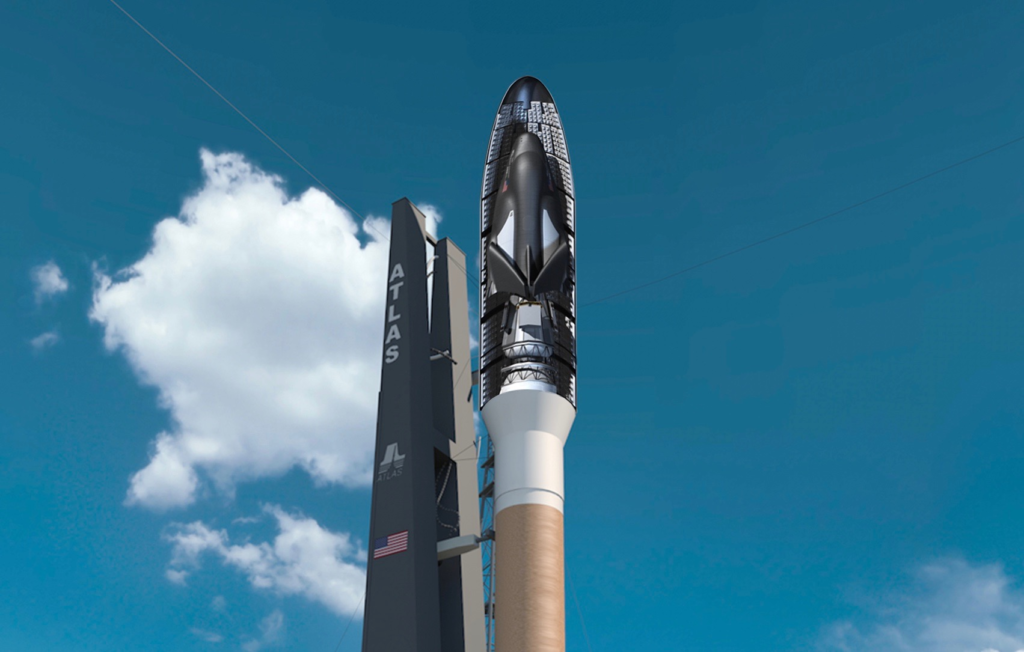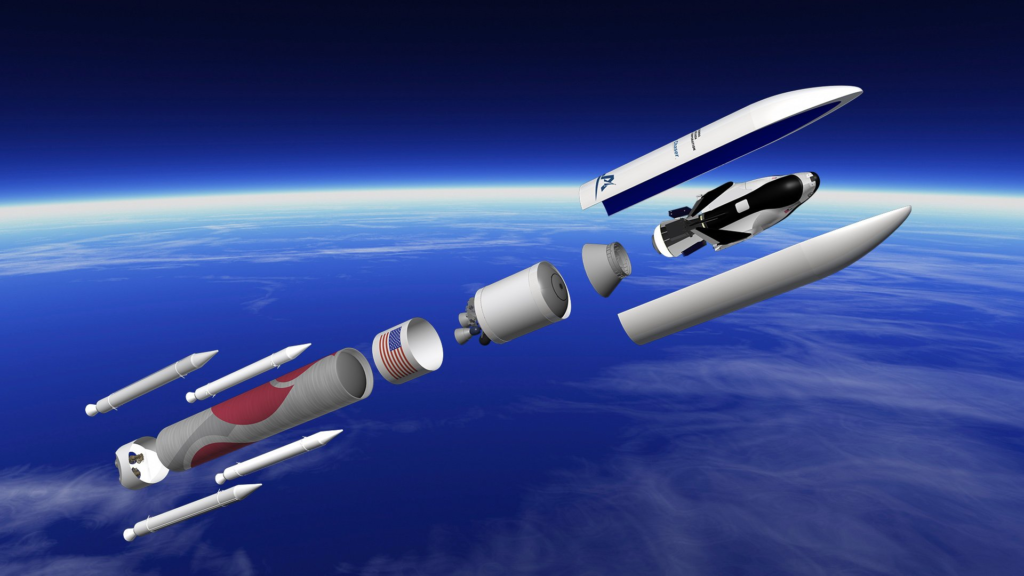
The Problem With Dream Chaser’s Launch Vehicle
After decades of development and manufacturing, the Dream Chaser spaceplane is approaching its first-ever launch, or is it? Unfortunately, this maiden flight has been continually pushed back from initial launch dates that go all the way back to 2021. With this being the first launch of this unique spacecraft, some delays are expected, however, the spaceplane and Sierra Space are not solely responsible.
Dream Chaser is only a spacecraft, meaning in order to reach orbit, it needs the help of a dedicated launch vehicle. While there were a few options, in 2019, SNC announced that Dream Chaser would fly on top of United Launch Alliance’s Vulcan Centaur. At the time a rocket still in development expected to be ready by 2021.
Beyond that, they announced that not only would they utilize this launch vehicle for the first Dream Chaser launch, but all 6 of the contracted CRS flights to the International Space Station. A decision that could add even more delays to an already behind project. Here I will go more in-depth into the years of delays, the complications with Vulcan, possible future impacts, and more.
Vulcan Delays

Dream Chaser is an American reusable lifting-body spaceplane trying to provide unique launch and particularly cargo return capabilities. If you include some of the vehicles this specific design is derived from, development goes back prior to the 2000s. After missing out on a lot of contracts, in 2016, NASA announced that Dream Chaser had been awarded one of the CRS-2 contracts and committed to purchasing a minimum of six resupply missions to the ISS. Soon after the first launch was scheduled to happen in 2021, on ULA’s Vulcan.
Around that time, Vulcan was supposed to fly by 2019, meaning there was a decent bit of margin before it was needed for the Dream Chaser mission. In reality, however, quite a few things turned around causing significant delays. In 2018, USAF released an NSSL launch service agreement with new requirements, delaying Vulcan’s initial launch to April 2021, after an earlier postponement to 2020. In 2021, Astrobotic responsible for one of the maiden flight’s payloads, said they needed more time to prepare Peregrine, delaying the first flight of Vulcan to 2022 and later to 2023. This combined with a host of other complications including BE-4 engine delays made a rocket scheduled to lift off in 2019 stay grounded for all this time.
This leads up to the most recent developments where similar problems are occurring. The first launch of Dream Chaser Tenacity, will happen not on the first Vulcan launch, but the second. This first commercial mission is part of ULA’s requirement to meet the U.S. Space Force certification of its new launch vehicle. In other words, Vulcan has to complete this first flight successfully before it can launch Dream Chaser.
By late last year, this maiden flight was supposed to happen early this year, then it was pushed back toward the summer, and now it is scheduled to happen in December. This mainly comes down to the explosion of a Vulcan upper-stage tank during a test. In March ULA CEO Tory Bruno revealed that “During Qual testing of Centaur V structural article at MSFC, the hardware experienced an anomaly. The investigation found that the leak originated in the forward dome of the tank, which is made of very thin stainless steel, near a door at the top of the structure. A very detailed finite element model of that part of the tank revealed a “stress riser,” or intensification of loads, because of the complicated geometry around that part of the dome. That had been missed in earlier, coarser analysis of the tank.
As a result, they had to ship the nearly flight ready Vulcan test article from the launch site back to the factory for repairs. Most recently on the 27th, Tory Bruno tweeted saying, “Looks like Vulcan’s CERT1 (first flight) Centaur V in final assembly in the new CV IACO line at Decatur. #VulcanRocket . Vulcan is coming…” Despite these complications, Tory has continued to be adamant that the first launch will happen this year in December. This however is the best case scenario. Even if the launch does happen in December, the second launch which will carry Dream Chaser, could launch in the beginning of 2024, at the earliest.
In reality, there are still a lot of unknowns and work that needs to be completed before Vulcan integrates with Dream Chaser Tenacity. It’s possible that in the coming months, Tenacity will be complete and waiting on Vulcan. At the end of the day, Vulcan is also a new rocket with new technology. With its current delays, it can’t afford to run into any more problems, especially during the maiden flight. A launch anomaly would practically force Sierra Space to look for other launch providers.
Dream Chaser

To meet the CRS-2 guidelines, the cargo Dream Chaser has to have folding wings and fit within a 5 m diameter payload fairing, in contrast to the Crewed Dream Chaser, which is intended to launch without a fairing. The Dream Chaser spacecraft has a gross mass of 9,000 kg, a length of 9 m, a span of 7 m (4.5 m with folded wings) and a height of 2 m. It also needs to fit when the Shooting Star service module is attached, which adds extra weight and length.
Even still, other launch vehicles could launch the cargo variant with folded wings and solar panels. Back before SNC picked ULA and Vulcan as the launch option, they were originally planning to use ULA’s existing Atlas 5 for at least the initial Dream Chaser mission. Around that time, the company said it was looking at options other than the Atlas 5 for later Dream Chaser missions, including the use of European or Japanese launch vehicles.
Eventually, the company settled on the Vulcan for the full block of at least six CRS2 missions. “This was the choice that I feel is best for this program, that I went to Eren and Fatih to tell them this was best for this program,” said John Curry, Dream Chaser CRS2 program director at SNC, referring to the president and chief executive, respectively, of SNC.
One employee said the company looked at five different launch options, including European and Japanese vehicles — likely the Ariane 6 and H3, respectively — “and also, obviously, Elon Musk and Jeff Bezos,” the founders of SpaceX and Blue Origin. “They all have really good capabilities,” she said. She also was quoted saying, “ULA had a pretty significant advantage because we have been working with ULA from day one,” a relationship that dates back to plans under NASA’s commercial crew program to launch a crewed version of the spacecraft on an Atlas 5.
“Not to mention,” she added, “that we had a really good competitive price.” Technical performance was another factor. “We spent a lot of time learning about this vehicle to make sure it was right,” Curry said. “Safety and reliability was a major reason why we chose this team and this rocket.” Interestingly, around 2019 when these quotes were said, they even pointed out that should Vulcan suffer delays, there is an option to shift launches to the Atlas 5.
To add to this they said, “We’re maintaining the ability to fly on other launch vehicles,” said John Roth, vice president of strategy and business development at SNC. “We’re launch vehicle agnostic.” These comments are very interesting considering the current delays and timeline of Vulcan. In reality, the reason we haven’t seen Dream Chaser and Sierra Space move to a different rocket like they said they would, is because they also aren’t ready yet. Specifically, Dream Chaser Tenacity has faced enough delays to keep it somewhat in line with Vulcan.
A few months ago, Tom Vice, chief executive of Sierra Space, said the company was continuing to work towards a first launch of its cargo Dream Chaser vehicle as soon as December. That vehicle, he said, is going through final integration and testing work at the company’s Colorado factory. It remains scheduled to ship later this summer to NASA’s Neil Armstrong Test Facility in Ohio, the former Plum Brook Station, for thermal vacuum testing. From there it will go to the Kennedy Space Center for final launch preparations.
Most importantly, he commented that he expected Dream Chaser to be fully integrated with its launch vehicle, United Launch Alliance’s Vulcan Centaur, in “the December timeframe” and launch in a window that extends into early February. Vehicle integration in December or January would support a launch in the first months of 2024. At this point, it seems like the biggest concern has shifted from the Tenacity test article and now the Vulcan rocket.
In terms of physical progress Tenacity has been very busy over the past couple of months. Earlier this summer for example the spaceplane was successfully powered up for the first time. In addition, by now, nearly all of Dream Chaser’s heat shield tiles should be installed allowing the vehicle to begin vacuum testing. In total, there are a few thousand tiles each with unique shapes and specific placements across the body. Sierra Space expressed in the past that this process takes time and needs to be perfect. In the next few weeks, we can expect more updates from both ULA and Sierra Space as they approach the most up-to-date launch timeline. At the same time, despite the launch date only months away, there still is a lot of work left and unknowns for both the rocket and the spaceplane.
Conclusion
United Launch Alliance is responsible for providing Vulcan to Sierra Space, as a launch service for Dream Chaser. Constant delays have pushed this rocket’s maiden flight back by years, something Dream Chaser has also experienced. We will have to wait and see how it progresses and the impact it has on the space industry.
